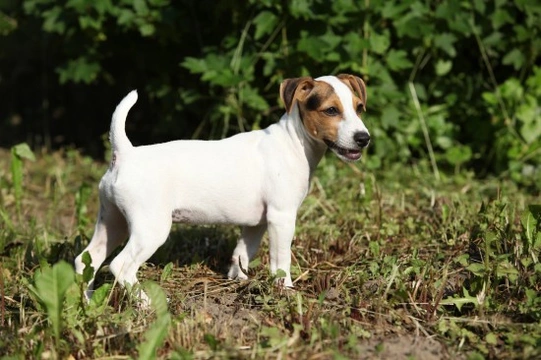
The differences in care and traits of rough versus smooth coats on dogs
Dog hair textures are generally described in three different ways, being rough, smooth or broken. Rough coats do exactly what they say on the tin, appearing slightly harsh and wiry, and without a sleek, smooth appearance, while a smooth coat should be sleek and generally straight or only gently waved. A broken coat is a coat that is a combination of the two types, with the hair falling somewhere in between or combining smooth patches with rough, giving the coat a “broken” appearance that is neither one nor the other.
While many dog breeds have a uniform hair type across the breed as a whole, some breeds can be found in either a smooth or rough variety, and some breeds also contain dogs with a broken coat type too. The way that each type of hair behaves, how much care it needs and how it feels varies quite a considerable amount, and it is worth finding out a little bit more about each coat type, in order to get a fuller picture of how to take care of dogs with different types of coats.
We will examine these factors in more detail within this article; read on to learn more.
Breeds and coat types
Each breed of pedigree dog possesses a breed standard, which outlines the general appearance of the dog and what type of coat they should have. While some breeds can be found in a variety of different coat types, some breeds will only display one; for instance, dogs such as the boxer, Dalmatian, and Staffordshire bull terrier are smooth coated, while many terriers can be found with rough coats, such as the Affenpinscher. Other breeds, such as the Jack Russell terrier, can be found with either a rough, smooth or broken coat.
Rough coats
Rough coated dogs tend not to shed hair heavily, and some rough coated dogs will shed hardly at all. This means that they will not drop a lot of hair around the home, and as such, they are a popular pick for people that are prone to suffering from allergies to dogs. This does mean that such dogs will require brushing and grooming on occasion to help to remove hair that is shed but caught within the remaining hair of the coat, but aside from this, rough coat care tends to need minimal attention.
Smooth coats
Most breeds of dog with a double layered coat tend to be smooth, or soft coated, and soft coated dogs tend to shed much more heavily than rough coated dogs.
Dogs with a short, fine single layer of fur, such as the aforementioned boxer of Staffy, will shed hair year round, but require minimal or no coat care, as their hair does not grow long enough to tangle or get trapped in the still-growing hair.
However, dogs with smooth, double-layered coats tend to shed heavily year round, and this becomes particularly pronounced around the change in the seasons, when they lose their undercoats to grow in the new layer of fur to suit the changing weather.
This means that breeds such as the golden retriever, Siberian husky and German shepherd tend to shed year-round, and once or twice a year, blow their coats and shed hair in great quantities. Regular brushing and grooming is required to keep coats such as these in good condition, particularly in the case of long fur, which will soon become tangled and matted if left unchecked.
Some smooth coated breeds with long hair but only one layer of fur, such as the Lhasa apso and Afghan hound grow very long coats, which require combing and de-matting, but which do not shed as heavily as breeds with an undercoat.
Coat care
Regardless of the texture of the coat, dogs with short hair of any type tend to be much easier to maintain than dogs with longer fur. Shorthaired smooth coated dogs and dogs with rough coats only require occasional brushing or tidying up, while longer haired dogs with coats of any type should be groomed at least a couple of times a week (and up to daily for some breeds) in order to keep their coats in good condition.
Dogs with broken coats tend to be shorthaired as a general rule, with care requirements similar to that of other shorthaired dogs.
If your dog has long, thick fur, particularly if it has an undercoat, a significant amount of attention is required, particularly to areas that are apt to tangle including behind the ears, under the belly, and between the legs. Some dog owners of breeds that would otherwise be very high maintenance prefer to have their dogs clipped into a shorter style that is easier to manage on a daily basis, but which does mean that regular trips to the grooming salon are required to maintain the clip.



